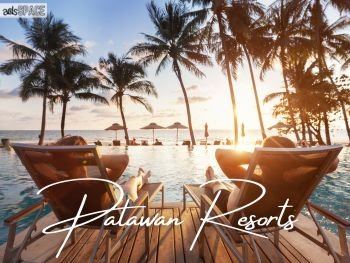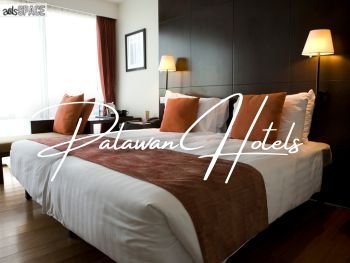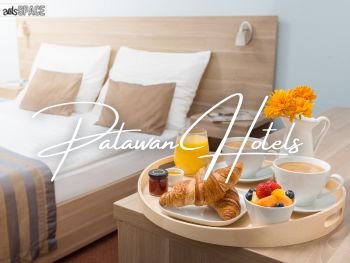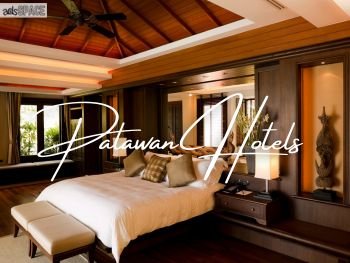Introduction
Honda Bay, located on the eastern coast of Puerto Princesa City, is one of the crown jewels of Palawan’s tourism. Famous for its island-hopping adventures, the bay is dotted with numerous islets and sandbars, each with its own unique charm. Its waters are home to rich coral reefs, colorful tropical fish, and pristine beaches that attract both local and international travelers.
Beyond its natural beauty, Honda Bay also serves as a vital livelihood hub for coastal communities, many of whom rely on fishing, aquaculture, and tourism. This dual role makes it both a place of leisure and an important ecological and economic resource for Puerto Princesa.
Location and Accessibility
Honda Bay is situated just 15 to 20 minutes north of Puerto Princesa City proper. From the city center, visitors can easily reach the Sta. Lourdes Wharf, the main jump-off point for island-hopping tours. The wharf is accessible by tricycle, van, or private vehicle, and serves as the gateway to boat rentals and accredited tour operators.
The proximity of Honda Bay to the city makes it an ideal day trip destination, often combined with city tours for visitors on a limited schedule. Unlike more remote Palawan destinations such as El Nido or Coron, Honda Bay offers accessibility without sacrificing natural beauty.
Major Islands of Honda Bay
Honda Bay is composed of numerous islands and sandbars, each with distinct features that make island-hopping an adventure of variety and discovery. Some of the most popular stops include:
- Snake Island: Named for its long, winding sandbar that resembles a snake, this island is famous for its shallow waters ideal for wading and snorkeling. Visitors can walk along the sandbar during low tide, surrounded by crystal-clear waters.
- Starfish Island: Known for its abundance of starfish in varying sizes and colors, this island is a favorite among families and beginner snorkelers. Its shallow waters allow easy viewing of marine life.
- Lu-li Island: Short for “lulubog-lilitaw” (sink and emerge), this tidal islet disappears underwater during high tide and reappears at low tide. It is a popular photo spot and a reminder of nature’s rhythms.
- Pandan Island: Surrounded by coral reefs, this island is a top snorkeling and diving spot. The clear waters reveal schools of fish, vibrant corals, and occasional sea turtles.
- Señorita Island: Known for its aquaculture activities, visitors here can glimpse fish cages and seaweed farms, showcasing how locals blend tourism with traditional livelihoods.
- Arreceffi Island: Home to the Dos Palmas Island Resort & Spa, this private island offers luxury accommodations and a variety of activities such as kayaking, diving, and eco-tours. It is one of the bay’s most exclusive destinations.
- Bat Island: True to its name, this small island is home to thousands of bats. At dusk, visitors can witness the dramatic sight of bats flying out in massive swarms, silhouetted against the sunset.
- Cowrie Island: A popular choice for picnics, sunbathing, and beach games, Cowrie Island offers well-maintained cottages, restaurants, and recreational facilities. It is often included in standard island-hopping packages.
Some tours also include smaller islets depending on tides and weather conditions, ensuring no two Honda Bay adventures are exactly alike.
Activities and Experiences
Honda Bay offers more than just sightseeing; it is a hub for water-based activities and eco-adventures. Among the most popular are:
- Snorkeling: Visitors can rent gear and explore coral gardens teeming with tropical fish.
- Scuba Diving: The reefs of Pandan Island and Dos Palmas are excellent diving spots for both beginners and experienced divers.
- Kayaking: Paddle through mangroves or along island coastlines for a quieter experience.
- Beach Picnics: Many islands provide cottages and designated picnic areas where families and groups can enjoy meals with a view.
- Swimming: With calm waters and shallow beaches, Honda Bay is ideal for casual swimmers and children.
- Wildlife Watching: Whether it’s spotting starfishes at Starfish Island or witnessing bats at Bat Island, Honda Bay offers unique encounters with nature.
Marine Life and Biodiversity
Honda Bay is part of the rich marine ecosystem of Palawan, often dubbed the Philippines’ “Last Ecological Frontier.” Its waters host diverse marine species including clownfish, parrotfish, wrasses, and butterflyfish. Snorkelers often encounter giant clams and colorful corals, while divers may spot sea turtles and rays.
Mangroves along the bay’s shoreline serve as nurseries for marine life, while seagrass beds support dugongs (sea cows), an endangered marine mammal occasionally sighted in Palawan waters. These interconnected habitats make Honda Bay not only a tourist destination but also an important site for marine conservation.
Resorts and Accommodations
While many visitors enjoy Honda Bay as a day trip, the area also offers resorts and accommodations for those who wish to stay overnight. The most notable is Dos Palmas Island Resort & Spa on Arreceffi Island, which provides luxury villas, spa services, and organized eco-tours.
Within Puerto Princesa City, numerous hotels, hostels, and boutique resorts offer convenient access to Honda Bay through packaged tours. These range from budget-friendly stays to mid-range and upscale accommodations catering to both backpackers and families.
Fishing Villages and Local Culture
Surrounding Honda Bay are several fishing villages where locals continue traditional livelihoods. Visitors often glimpse bancas (small wooden boats) bringing in fresh catches, or fish cages along the shallows. Seaweed farming is also common in islands like Señorita, showcasing how communities adapt sustainable practices to balance food security and tourism.
For travelers interested in cultural immersion, some tours include interactions with local communities, offering opportunities to learn about Palawan’s coastal traditions and everyday life.
Conservation and Sustainable Tourism
The increasing popularity of Honda Bay has brought challenges such as coral damage, waste management, and overfishing. To address these issues, the Puerto Princesa City Government, in partnership with local NGOs and resort operators, has implemented measures to promote sustainable tourism.
- Visitors are required to pay environmental fees, which fund conservation projects and reef protection.
- Snorkeling and diving activities are regulated to minimize coral damage.
- Plastic bans and waste segregation programs are enforced on islands.
- Community-based tourism ensures local residents benefit economically while helping protect the ecosystem.
These efforts aim to preserve Honda Bay’s natural beauty for future generations while allowing responsible tourism growth.
Travel Tips for Visitors
- Best Time to Visit: The dry season (November to May) offers the calmest seas and best visibility for snorkeling and diving.
- What to Bring: Sunblock, rash guards, waterproof bags, and snorkeling gear (though rentals are available).
- Tour Packages: Accredited tour operators offer island-hopping packages that typically include lunch, boat transfers, and entrance fees.
- Respect Nature: Avoid stepping on corals, feeding wildlife, or leaving trash on the islands.
- Timing: Start tours early in the morning to maximize time and avoid crowds.
Conclusion
Honda Bay is more than just a destination—it is an experience that captures the essence of Puerto Princesa’s coastal beauty. From the playful sandbars of Snake Island to the vibrant corals of Pandan, from the bat flights at dusk to the family picnics on Cowrie Island, every stop reveals a different side of Palawan’s ecological and cultural wealth.
As one of Puerto Princesa’s most accessible natural attractions, Honda Bay continues to enchant adventurers, families, and nature lovers. Its blend of pristine landscapes, marine diversity, and community culture makes it a true gem of the Philippines, a place where tourism and conservation must work hand in hand to preserve its magic for generations to come.




